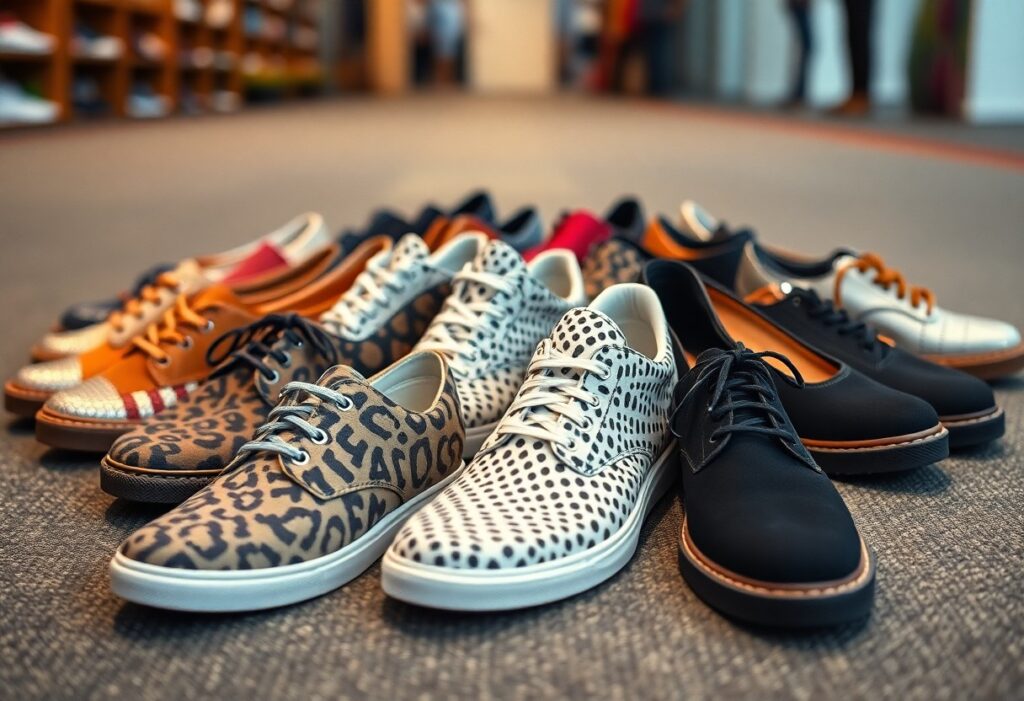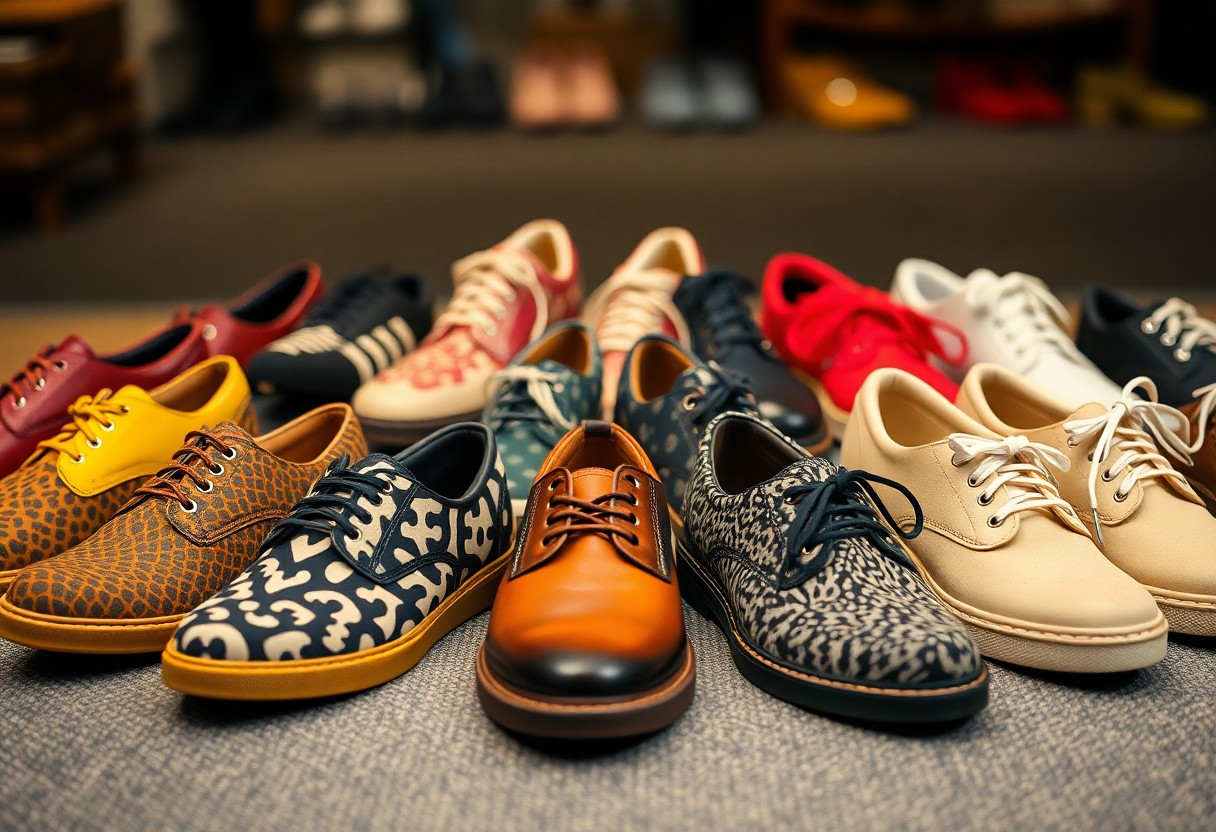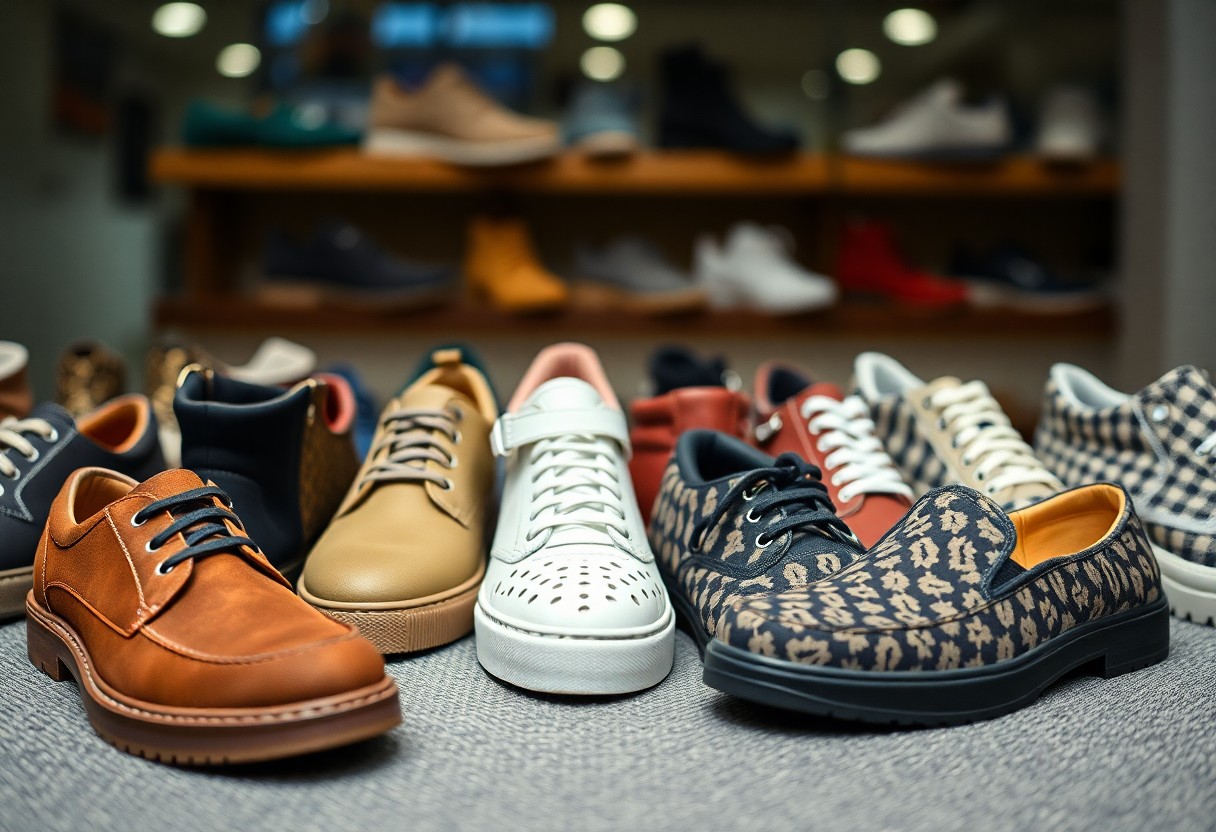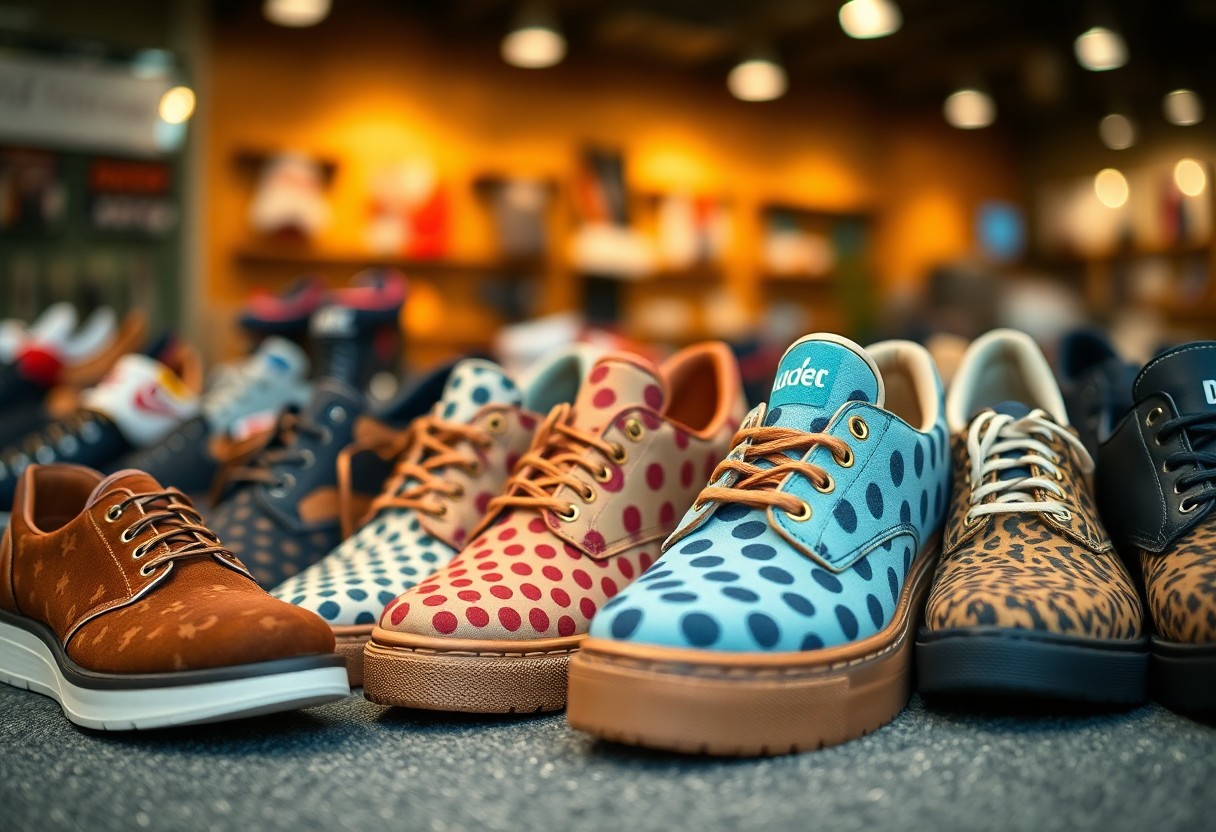
If you have wide feet, finding comfortable shoes can be a challenge. Many traditional shoes have a narrow structure, leading to discomfort and potential long-term issues like bunions, corns, and nerve damage. You may experience pain and postural problems if your shoes don’t fit properly. Consider barefoot shoes with a wider toe box and flexible materials for a more comfortable and natural fit.
The Challenges of Finding Comfortable Shoes for Wide Feet
A common problem for people with wide feet is finding shoes that fit comfortably. Many traditional shoes have a narrow structure, making it difficult for individuals with wider feet to find a pair that doesn’t pinch or cause discomfort.
The Discomfort of Poor-Fitting Shoes
Finding the right shoe can be a challenge, and poor-fitting shoes can lead to serious issues such as bunions, corns, and calluses. Wearing shoes that are too tight or narrow can cause long-term damage to your feet, including neurological damage and postural issues.

The Importance of Proper Fit
Among the key factors in finding comfortable shoes is the importance of a proper fit. You need shoes that accommodate your wide feet without pinching or restricting your toes. A proper fit can help prevent foot problems and ensure that you can walk or stand comfortably.
Also, a good fit is crucial for maintaining good posture and preventing back, hip, and knee problems. When you wear shoes that fit properly, you can move naturally and comfortably, reducing the risk of injuries and chronic pain. By choosing shoes that cater to your wide feet, you can enjoy better overall well-being and improved mobility.
The Risks of Wearing Ill-Fitting Shoes
It is important to wear shoes that fit your feet properly, as ill-fitting shoes can lead to various problems. If you have wide feet, wearing narrow shoes can cause discomfort, pain, and even long-term health issues. You may experience bunions, corns, calluses, blisters, and hammer toe, which can affect your overall well-being and mobility.
Common Foot Problems
Besides the discomfort, poorly fitting shoes can lead to common foot problems like bunions, corns, and calluses. These issues can cause pain and affect your daily activities. You may also experience blisters and hammer toe, which can be painful and uncomfortable.
Long-Term Health Consequences
Behind the immediate discomfort, wearing ill-fitting shoes can have severe long-term health consequences. You may experience neurological damage, postural issues, and pain, which can impact your overall health and well-being. These issues can also lead to back, hip, and knee problems, affecting your mobility and quality of life.
Risks of wearing ill-fitting shoes are high, and you should take them seriously. You can experience permanent damage to your feet, ankles, and legs, leading to chronic pain and discomfort. Furthermore, you may develop postural problems, which can affect your balance and mobility. It is important to prioritize your foot health and wear shoes that fit your feet properly to avoid these serious consequences.

The Benefits of Barefoot Shoes for Wide Feet
Some people with wide feet find that traditional shoes don’t provide the comfort and support they need. Barefoot shoes can be a great alternative, offering a wider toe box and a more natural fit.
Natural Foot Movement and Alignment
Naked feet need room to move and function naturally. Barefoot shoes allow your feet to move freely, which can help improve your posture and balance.
Reduced Pressure and Discomfort
Foot health is important, and wearing shoes that are too tight can cause serious issues, including bunions, corns, and calluses. Barefoot shoes can help reduce pressure and discomfort by providing a wider toe box and a more natural fit.
Natural movement and alignment are key to preventing long-term issues such as hammer toe, neurological damage, and postural problems. By wearing barefoot shoes, you can give your feet the freedom to move and function naturally, which can help improve your overall well-being. Remember to consult a physician or a qualified health provider for any questions or concerns you may have about your foot health.

Comparing Traditional Shoes with Barefoot Shoes
All shoes are not created equal. Here is a comparison of traditional and barefoot shoes:
| Traditional Shoes | Barefoot Shoes |
|---|---|
| Narrow toe box | Wider, foot-shaped toe box |
| Raised heel | Zero-drop sole |
| Rigid sole | Flexible materials |
Key Differences in Design
Shoes that are designed with a wide toe box and zero-drop sole provide more comfort for wide feet. You will find that barefoot shoes offer a more natural fit and allow your toes to spread out naturally.
Advantages of Barefoot Shoes for Wide Feet
Below are some benefits of barefoot shoes for people with wide feet. You will notice that these shoes provide comfort and flexibility without pinching your toes.
Wide feet require shoes that can accommodate their unique shape. Barefoot shoes are designed to provide a natural fit and allow your toes to spread out naturally. You will find that these shoes offer multiple benefits, including a wider toe box, Zero-drop sole, and flexible materials. By choosing barefoot shoes, you can avoid long-term issues such as bunions, corns and calluses, and neurological damage. With barefoot shoes, you can enjoy comfort and flexibility while maintaining proper posture and balance.
Xero Shoes: A Solution for Wide Feet
Once again, you can find comfort and style with Xero Shoes, designed to accommodate wide feet. They offer a range of minimalist-style footwear for various activities and lifestyles, providing a wide toe box and flexible materials for natural foot movement.
Features and Benefits
Along with their minimalist design, Xero Shoes feature a zero-drop sole, allowing for natural gait and spinal alignment. Their flexible materials enable your feet to move and bend without restriction, providing comfort and flexibility.
Customer Testimonials and Reviews
Feet that were once constricted by traditional shoes have found relief with Xero Shoes. Customers rave about the comfort and natural fit, with some even stating they will never buy another type of shoe again.
Hence, you can trust the feedback from satisfied customers who have experienced the benefits of Xero Shoes firsthand. With wide toe boxes and flexible materials, Xero Shoes have helped people with wide feet avoid painful conditions like bunions, corns, and calluses. By choosing Xero Shoes, you can enjoy comfortable and stable walking, running, or hiking experiences, with the added benefit of improved posture and balance.
Finding the Right Barefoot Shoes for Your Needs
Keep in mind that barefoot shoes can provide comfort and flexibility for wide feet. They have a wider toe box and a minimalist design that allows your feet to move naturally.
Options for Different Activities and Lifestyles
About the various activities you engage in, barefoot shoes can accommodate your needs. They come in different styles, such as running, walking, or hiking shoes, to fit your lifestyle.
Tips for Choosing the Right Size and Style
To choose the right size and style, consider the following:
- Width and length of your feet
- Activity you will be using the shoes for
- Comfort and flexibility of the shoe
Any shoe that fits well and provides comfort will be a good choice for you.
With the right barefoot shoes, you can enjoy comfort and flexibility. Consider the following:
- Zero-drop sole for natural gait and spinal alignment
- Flexible materials for unrestricted foot movement
- Wide toe box for toe spreading and splay
Any shoe that provides these features will be a good option for wide feet, offering comfort, support, and protection for your feet.
Hence, you can now find the best shoes for your wide feet, prioritizing comfort and style. You’ve learned that traditional shoes often don’t fit, but barefoot shoes can provide a better fit. You can explore options like Xero Shoes, designed for wide feet, and find the perfect pair for your lifestyle and activities.
FAQ
What are the best shoes for wide feet, and how can they provide comfort and style?
The best shoes for wide feet are often barefoot or minimalist shoes, which offer a wider toe box and flexible materials to accommodate natural foot movement. These shoes provide comfort by allowing toes to spread out naturally, reducing pressure and discomfort. Brands like Xero Shoes offer a range of stylish options for men and women with wide feet, suitable for various activities and lifestyles.
What are the potential health issues associated with wearing shoes that don’t fit wide feet properly?
A: Wearing shoes that are too tight or don’t fit wide feet properly can lead to various health issues, including bunions, corns, calluses, blisters, hammer toe, and neurological damage. These issues can also cause postural problems, pain, and mobility issues, ultimately affecting overall well-being and quality of life.
How do barefoot shoes differ from traditional shoes, and what benefits do they offer for people with wide feet?
A: Barefoot shoes differ from traditional shoes in their design, featuring a wider toe box, zero-drop sole, and flexible materials. These features allow for natural foot movement, reducing pressure on toes and promoting comfortable walking and standing. Barefoot shoes like Xero Shoes offer benefits such as improved posture, balance, and flexibility, making them an excellent option for people with wide feet who struggle to find comfortable and stylish shoes.








I totally relate to the struggle of finding shoes that accommodate wider feet! For years, I’ve dealt with pinching and discomfort, especially when trying to find something stylish for work or a night out. It’s frustrating to see all the chic options that just don’t come in my size. I recently switched to barefoot shoes, and it’s been a game-changer. The wider toe box and flexible fit allow my feet to relax instead of cramming them into something that feels like it’s made for someone else’s foot altogether.
It’s great to hear you’re finding some relief with barefoot shoes. That wider toe box really makes a difference, doesn’t it? It’s such a shame that so many stylish options ignore the needs of wider feet—it can feel like a huge barrier to finding something you actually want to wear. Have you noticed any particular styles or brands that have worked well for you? I’ve heard that some brands are finally catching on and starting to offer more inclusive sizes. It’s nice to see the shift, but I wish it happened sooner. Any tips on what to look for when exploring those options would be interesting to hear as well.
I completely get where you’re coming from. Finding shoes that both fit well and look stylish can feel like an impossible task, especially with wider feet. It’s like fashion sometimes forgets that comfort should also play a role in how we look and feel.
I can relate to your experience with finding shoes that fit both well and look good, especially with wider feet. It often feels like there’s this disconnect in the fashion world between style and comfort. I’ve spent countless hours trying on shoes that look great but end up pinching and causing discomfort after a short while. Recently, I’ve started exploring brands that prioritize orthotic-friendly designs without sacrificing aesthetics, which has been enlightening.
Finding shoes that fit comfortably can be a maze, especially when wide feet come into play. It’s interesting how many people, like yourself, share this journey of squeezing into shoes that just aren’t a match. The struggle with pinching and discomfort is all too real, and it’s something many of us don’t fully understand until we experience it ourselves.
It really is a journey, isn’t it? The search for shoes that actually fit can feel a bit like a treasure hunt, but instead of gold, you’re just trying to find a pair that doesn’t cramp your style—or your feet. I’ve definitely had my share of awkward shoe encounters, squeezing into sizes that looked good on the shelf but turned out to be a total mistake once I started walking around.
Oh, the trials and tribulations of wide-footed warriors! It’s almost like we’re doomed to eternally navigate the shoe aisle like we’re on a quest for the Holy Grail – except the only treasure waiting for us is a decent pair of sneakers. I mean, has anyone else noticed that most shoe companies seem to think we all have feet shaped like twigs?
Ah, the quest for the perfect pair of shoes—it’s like we’re all part of the same secret club, isn’t it? I hear you loud and clear about the whole ‘twigs for feet’ situation. It’s like these companies just don’t get that not everyone wears a size narrow, and the options for wider feet are often pretty dismal. You’d think they’d realize there’s a whole world of foot shapes out there that deserve more representation.
Navigating the shoe aisle can feel like a series of mini battles, can’t it? It’s tough when it seems like the shoe industry is stuck on one narrow idea of what feet should look like. I totally get that frustrated feeling. It’s hard enough to find shoes that fit without feeling like you’re compromising on comfort or style.
Finding shoes that fit well has always been a struggle for me, too! It’s eye-opening how many people suffer from the discomfort of poor-fitting footwear. I’ve started leaning towards brands that offer wide options and emphasize comfort, especially after dealing with some persistent foot pain. I’ve also tried barefoot shoes and can personally vouch for the difference in comfort—my toes finally have the space they need to wiggle!
I can relate to your struggles with finding the right shoes. It’s surprising how much impact uncomfortable footwear can have on our overall well-being. I’ve also started exploring brands that focus on fit and comfort, particularly since my own experience with foot pain led me down that path. It’s refreshing to see more companies recognizing the need for wider options.
I can really relate to the struggle of finding comfortable shoes with wide feet. It’s frustrating to see so many stylish options out there that just don’t accommodate a wider fit. I’ve personally experienced the discomfort of shoes that pinch, and it’s disheartening when something as simple as footwear can affect day-to-day activities, leading to those long-term issues mentioned.
You’ve touched on a significantly overlooked issue in the footwear industry, especially concerning those of us with wide feet. The frustration of sifting through racks of shoes designed with a narrow fit can be really disheartening. I’ve often found myself settling for styles that pinch or create discomfort just to have something to wear.
I totally get where you’re coming from. The struggle to find shoes that fit comfortably can feel like a never-ending battle. It’s surprising how many brands don’t seem to consider wider feet in their designs. I’ve been there myself, forcing my feet into shoes that are clearly not meant for them just to match an outfit or participate in an event. It’s frustrating because it’s not just about aesthetics; it directly affects how we feel throughout the day.
I completely relate to your experience. The quest for comfortable shoes can feel like an endless journey. It’s interesting how the fashion industry often prioritizes style over practicality, leaving many of us to choose between looks and comfort. I used to think that squishing my feet into trendy shoes was necessary to look good, but I’ve come to realize just how much it affects my overall well-being.
I completely relate to the struggle of finding comfortable shoes for wider feet. It’s been a journey for me, especially with dress shoes. I found that many brands still prioritize aesthetics over comfort, which is frustrating! Switching to barefoot shoes was a game changer; it’s refreshing to finally wear shoes that let my feet breathe and move naturally. I’ve also noticed that integrating foot exercises has helped alleviate some discomfort. Has anyone else tried specific brands or types that accommodate wider feet well? I’m curious to hear about others’ experiences!
You’ve touched on a crucial yet often overlooked issue when it comes to footwear. As someone with wide feet, I’ve certainly faced my share of struggles trying to find shoes that don’t feel like a torture device after a few hours. The discomfort from traditional narrow shoes can indeed lead to significant health issues over time, which is alarming when you consider how many people might not even realize the long-term impact until it’s too late.
Ah, the eternal struggle of wide-footed warriors! I’ve spent countless hours navigating the murky depths of shoe stores, where every pair of cute shoes seems to have been crafted by someone who believes “narrow” is synonymous with “stylish.” It’s like walking through a gallery of foot traps!
You’ve really captured the essence of a common dilemma that many wide-footed warriors face in this stylish shoe landscape. It’s a bit of a paradox, isn’t it? You step into a store, surrounded by alluring designs, only to find that your quest for the perfect pair often leads you through a maze of options that feel like they were designed with a completely different foot shape in mind.
The struggle you’re sharing is something a lot of us can relate to in our own ways. It’s surprising how many shoe designers seem to overlook the fact that not everyone’s feet have the same shape. Those “cute” shoes really can feel more like foot traps, can’t they? When strolling through stores, it often feels like we’re wading through a minefield of style versus comfort, with most options leaning heavily towards the former.
I can totally relate to the eternal struggle of wide-footed warriors — it feels like a rite of passage, navigating those endless rows of shoes like a game of foot roulette. It’s surprising how often we overlook the basic idea that comfort and style can coexist. I mean, you’d think in this age of customization and inclusivity, shoe designers would be more attuned to the fact that not everyone has slim feet.
Finding comfortable shoes for wide feet is indeed a significant challenge that many people face, and it’s refreshing to see this topic addressed so thoroughly. As someone with wider feet myself, I can personally attest to the discomfort that comes from traditional shoe designs. I have often felt that the emphasis on aesthetics in footwear often overshadows the importance of fit, which ultimately affects our health.
You’ve touched on an issue that resonates with so many of us dealing with wider feet. I completely agree that the struggle to find comfortable shoes is often overlooked. In my experience, the conventional shoe brands focus so heavily on style that they leave little room for comfort, particularly for those of us with wider feet. It’s frustrating to see so many beautiful shoes that just don’t fit.
You’ve really tapped into a crucial issue that often gets overlooked. I can personally relate to the struggle of finding comfortable shoes with wider feet. It’s not just about aesthetics; the implications for long-term foot health are significant. I used to wear traditional shoes that pinched and caused discomfort, only to realize later that those choices led to bunions and ongoing foot pain.
You bring up essential points regarding the discomfort that can arise from poorly fitting shoes, especially for those with wide feet. I can relate to this challenge, having experienced significant discomfort from traditional shoes that simply weren’t designed with wider feet in mind. It’s fascinating to see how our shoe choices can profoundly influence not only foot health but overall posture and well-being.
You’ve really hit the nail on the head with this discussion about finding comfortable shoes for wide feet. As someone who wears a size 12 and often finds myself stranded in the narrow trenches of shoe aisles, I can absolutely relate. It’s frustrating because the comfort of our feet can impact our overall wellness, often in ways we don’t even realize until we’re struggling through a long day in ill-fitting shoes.